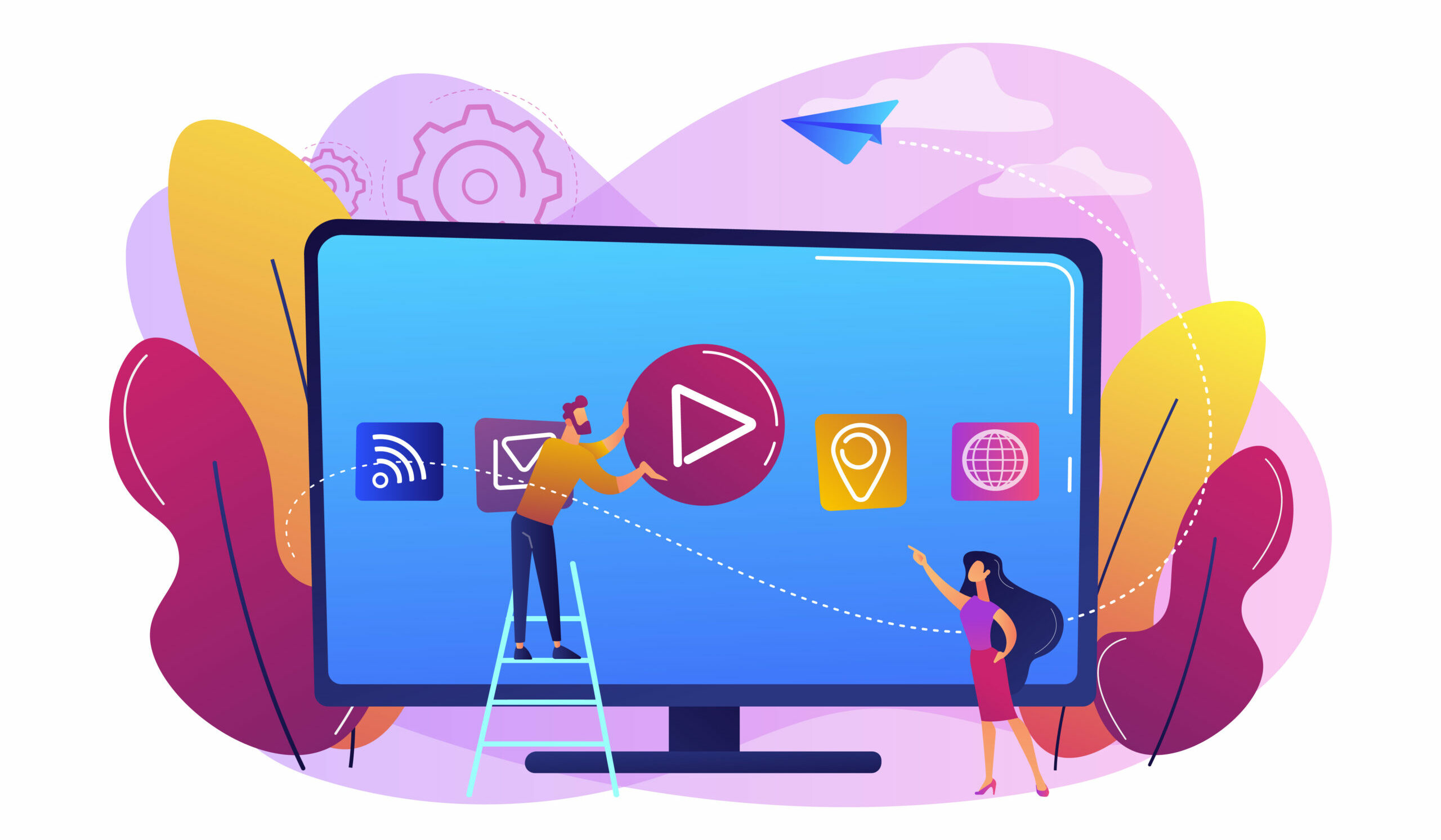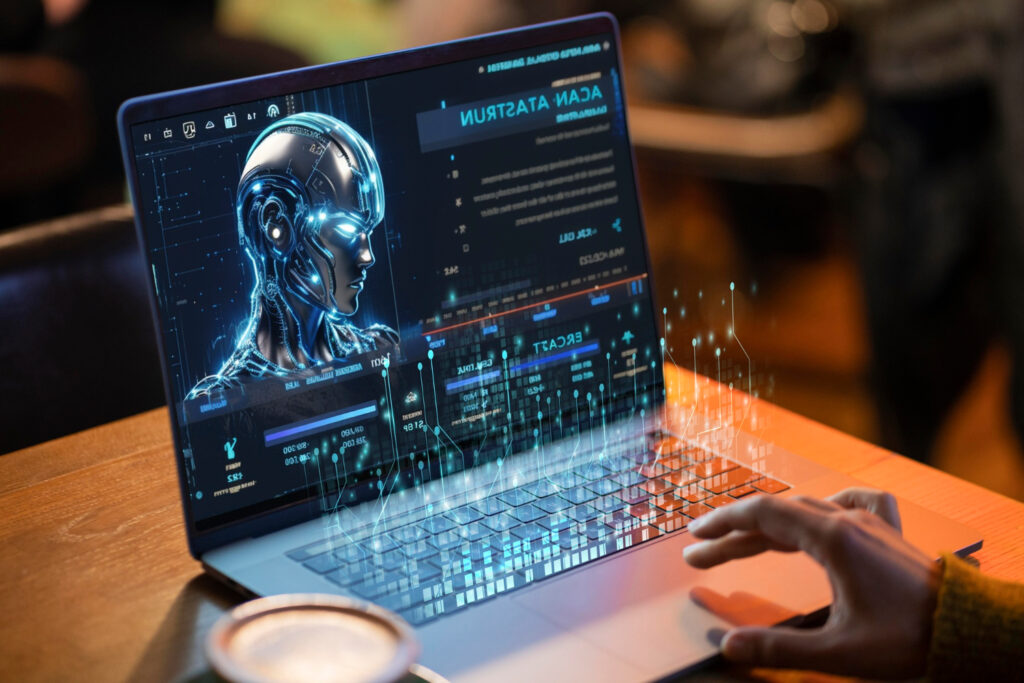M+E Connections

AI: A Very Useful Video Entertainment Tool Kit
Story Highlights
Money was important in the WGA/SAG-AFTRA strike, but just a skirmish … the long-term battle/discussion is intuitive/generative AI and the benefits it is going to deliver for studios, creators, audiences.
It’s the pitch all the AI experts – Greg Brockman (OpenAI), Clement Delangue (Hugging Face), Sundar Pichai (Alphabet/Google), Satya Nadella (Microsoft), Aidan Gomez (Cohere) and hundreds of other VC-funded start-ups around the globe – have given that resonate with bosses … better, faster, cheaper products, services, solutions.
At the same time, they’re releasing and promoting the brave new world, 350 experts (including the above) issued a joint statement, “Mitigating the risk of extinction from A.I., should be a global priority alongside other societal-scale risks such as pandemics and nuclear war.”
Oh, that’s great!
First, these better solutions are built on algorithms – a process/set of rules to be followed in problem solving operations by a computer.
Okay, that’s the basic premise and they seem to do what you expect them to do … sorta, kinda. But have you ever written out the objectives/goals of the algorithms you’ve used?
 Have you ever written/coded your own algorithm?
Have you ever written/coded your own algorithm?
We haven’t either but then we don’t understand how to build/fly a plane. We’re comfortable that others did/do their jobs properly.
However, AI is a whole different thing because … we’ve seen the movies! Gotta’ tell you, not once did things end up well for the characters that breath, eat, sleep, love/hate, desire/feel.
Of course, those were all in our collective creative fantasy world and in the real world, it’s going to be different/better. Every generational AI company (and tool) has a different goal that their approach will help business and society achieve but they all boil down to the same goals.
We have the technology. We have the capability. We can make him (it?) better than before. Better, stronger, faster.
And thanks to our advances in science and technology major improvements would only cost $460,000 compared to the actual cost back then of about $31.5 million, according to a Fox News analysis several years ago.
So why should creatives or society care if it’s going to do so much for us?
It depends on which AI technology developer/seller or market research firm you buy into.
According to one developer, it will inform users about the impact of their processes and point out the specific aspect(s) that are affected.
It can pinpoint the impacts and implications of profit centers and the organization’s overall success.
Nvidia, producers of the platform’s generative AI solutions, has noted that the technology can be used for almost any application/requirement/objective.
That’s cool!
TechTarget did a very good job of explaining the benefits and dangers to the film/show industry when they predicted it would be able to “create new, original content, such as images, videos, and text, that’s indistinguishable from content created by humans.”
They added that generative AI algorithms are trained on large datasets of existing content and can then use this data to create new content that is like the content it was trained on.
How AI does it and why was explained by the fact that AI is trained on large datasets of existing content and can then use this data to create new content.
Well, it’s not new stuff because it’s like the old stuff. Or, to put it in programmers’ terms, GIGO (garbage in, garbage out).
Of course, that can only lead to a sorry end for people who like to be entertained … even with a good film regurgitated in a new way; but no matter how you hide it, it’s the same old good film.
We end up with monocultural content for a monocultural world.
Nothing to hate, nothing to love. Just more cookie-cutter horror, drama, action, western, comedy, adventure, fantasy, sci fi and superhero films/shows.
That’s one of the key reasons the WGA/SAG-AFTA wanted to put some guiderails on how, when and where it is used and assurances that it doesn’t replace creation/production specialists.
 AMPTP (Alliance of Motion Picture and Television Producers), the trade organization representing studios, struggled to reassure the unions/workers by saying, “We’re creative companies and we value the work of creatives.”
AMPTP (Alliance of Motion Picture and Television Producers), the trade organization representing studios, struggled to reassure the unions/workers by saying, “We’re creative companies and we value the work of creatives.”
It’s true … in a way.
But more importantly, they focus on satisfying Wall Street and shareholders who value how much free money studios generate to pay them dividends.
Putting this point aside, writers will increase their use of AI tools like ChatGTP to do the spade work.
They will also use AI detection tools like GTPZero just to ensure the final project is really a different storyline and doesn’t infringe on existing IP.
WGA folks know and take pride in the fact that creative writing – good creative writing – is hard work. It requires organizing ideas, developing a plot, outlining the project, writing the first/second/third/fourth draft, and then editing the material again and again and again.
That’s why they need a team of peers in the writing room because no one likes to edit their own “excellent” work … no one!
In addition, no one wants an unfeeling, heartless, thoughtless, uncompassionate, uncaring, amoral tool or set of tools to call the shots. SAG-AFTRA also wants to ensure their members are protected.
No one in the industry wants to return to “the golden era of Hollywood” and the contract system that existed for more than 30 years when studios “owned” the actors.
Despite the concerns, someone – we forgot who – said of AI, “It’s the most transformational and exciting technology we’ve seen since the iPhone.”
It’s good, it can be helpful but as exciting as an iPhone?
AI isn’t a cute fad, it can be a valuable tool to assist professionals.
It’s here to stay and while it will replace some jobs it will also enhance others and even develop new, different opportunities across the industry.
Movie/show creators, writers, directors, producers, production, and post people have to learn how to use it right/intelligently and when to set it aside and use the personal tools/talents developed over the years.
“Today the ‘noise’ of information/misinformation, the visions of using unquestioning technology vs messy/meaningful engagement with people or the promises of instant riches vs. human devastation isn’t going to happen anytime soon” said Allan McLennan, president of 2G Digital Post Optimization. “This is because the use cases – primary research, content creation, post-production, and marketing – are too important to everyone at every level in the industry.
“The executives I talk with on both sides of the issue understand the need to develop, thoroughly test and slowly roll-out/integrate/validate any new technology into the $825B industry in order to ensure that everyone grows professionally and profitably,” he said.
He added that video and audio productions have been integrating AI tools to help generate captions, transcriptions, edit and even sometime narrate projects to help lower costs and assist in increasing the processes involved in these areas to free people up for more creatively in solving tasks.
Production and post facilities are using the AI tools built into Adobe, Avid, DaVinci Resolve, Final Cut Pro and other products to speed and improve content production.
These companies’ AI tools enable production and post facilities to edit, create visual effects, in addition to designing/mixing sound and color grade projects even on short deadlines while profitably maintaining their high-quality production standards.
While there are a few directors like Steven Spielberg, Quentin Tarantino, Christopher Nolan and Wes Anderson who are committed to analog film, few post houses want to return to the reel, scissors, tape era.
AI tools have also found strong proponents in audio editing to automatically remove background noise/unwanted sound and improve audio clarity.
“AI has proven to be valuable in certain aspects of content localization,” McLennan said. “For example, James Cameron had 58 different copies of Avatar localized so it could be enjoyed/appreciated by the vast majority of the theater attending audience just as though it was produced just for them. Without the use of AI tools, it would have been somewhat budget (time, money) prohibitive.”
And you’ll also be using AI more in the future of content creation, production, post, and distribution.
But it won’t/can’t be allowed to do its job without “adult supervision.”
 AI tools/systems will gather information/insights from a broad range of data sources and will loosely make decisions/recommendations based on the collective information rather than from a single expert or data source.
AI tools/systems will gather information/insights from a broad range of data sources and will loosely make decisions/recommendations based on the collective information rather than from a single expert or data source.
That is the logical answer; however, it’s a “sterile” solution/recommendation which may be right for all the wrong reasons.
It requires answer(s) that lack emotion, include intuition and gut-level experience to make a decent film/show a vibrant and emotionally memorable project.
Delivering that kind of video story requires a team of video/audio professionals working together – with AI tools – to deliver a continuing trove of entertainment variety that will keep people interested/involved in theaters, on their TVs, on their iPhones.
AI is just another tool to help people work more efficiently, more effectively and have greater personal/team satisfaction in the end results.
As the Specialist said in A.I. Artificial Intelligence, “Human beings have created a million explanations of the meaning of life… in art, in poetry, and mathematical formulas.” Certainly, human beings must be the key to the meaning of existence.”
The better AI becomes over time, the more it will become an accepted part of our content creation, production, post, distribution and viewing experience.
If it doesn’t, it will become yet another of the industry’s discarded efforts.
Andy Marken [email protected] is an author of more than 800 articles on management, marketing, communications, industry trends in media and entertainment, consumer electronics, software, and applications.









